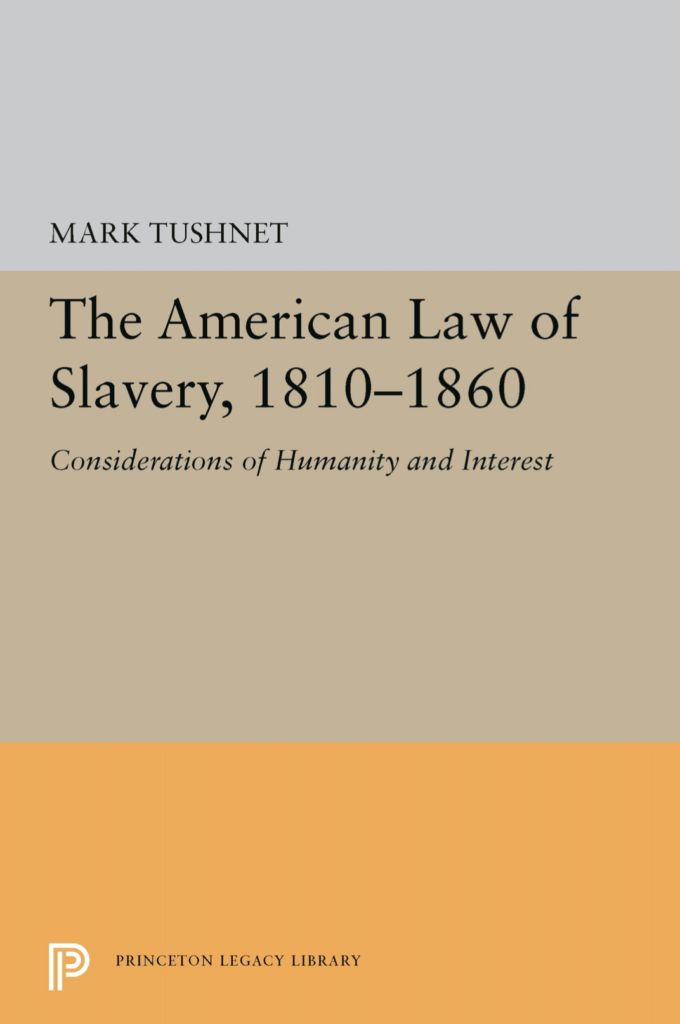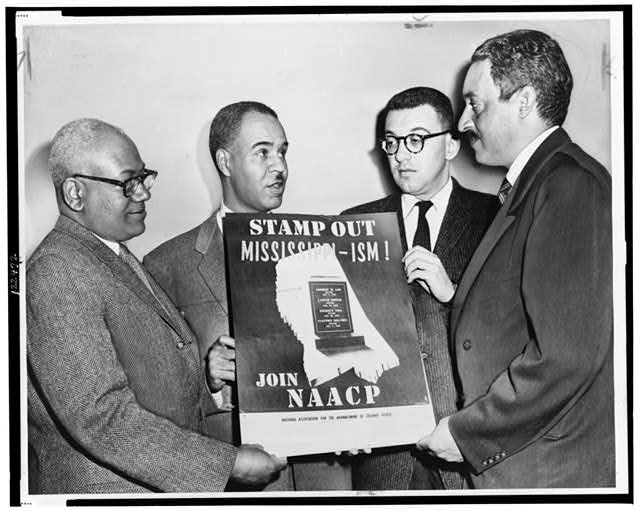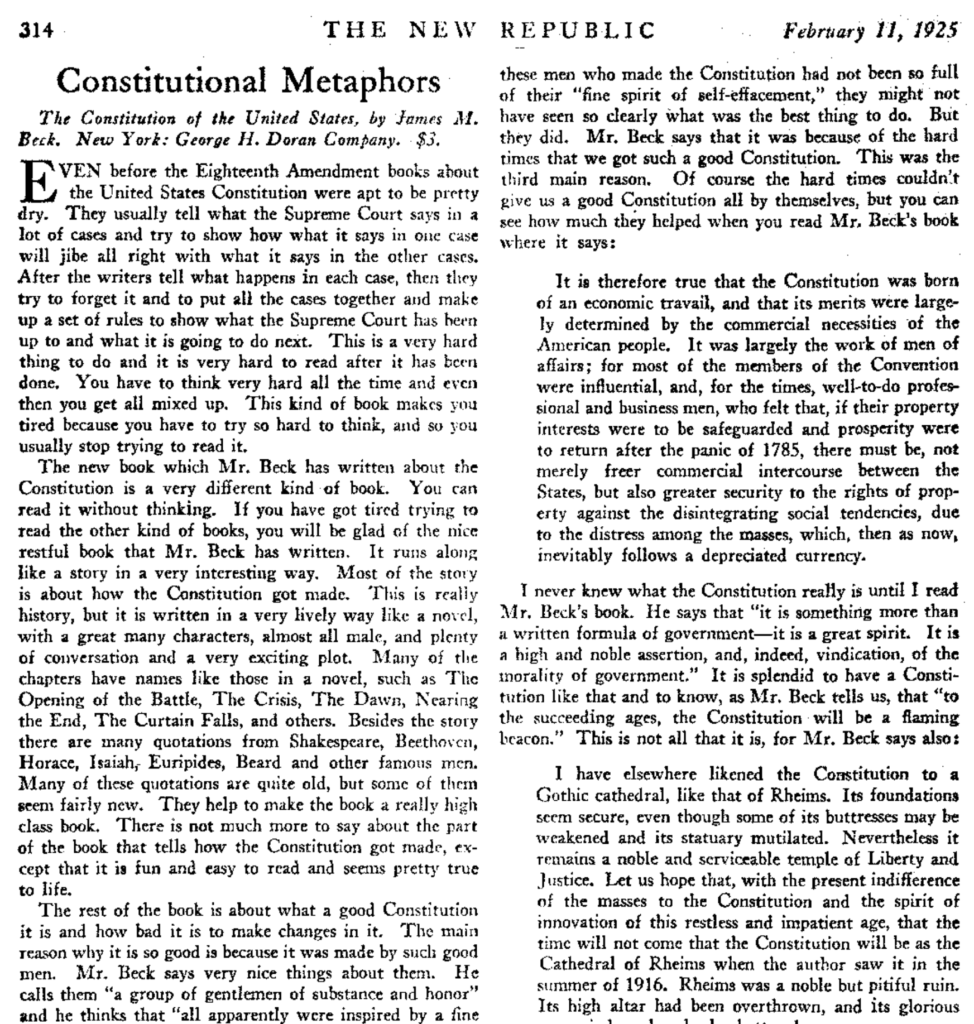Dirk Hartog’s “Four Fragments on Doing Legal History,” reflecting on the past fifty years or so of U.S. legal history and on the role and legacy, if any, of Willard Hurst, provokes me to similar though briefer and less well-developed reflections – especially because I began my career in the Hurst/law-and-society era at the University of Wisconsin.[1]
My first book, on the law of slavery, was an outgrowth of my work under Eugene Genovese. As I understand it now, that book was about what Genovese would call “the mind of the master class,” as revealed in legal opinions written within the constraints of legal doctrinal forms. In a sense it was a small-scale effort to identify the kind of legal consciousness that Hartog describes as Hurst’s enduring project about middle-class legal consciousness – though of course using materials quite different from the ones Hurst used and dealing with a different class formation.[2] But, given the book’s origins, I can’t attribute anything in it to “Wisconsin” distinctively.

That’s not true of my second book, on the NAACP’s campaign against segregated education. That resulted from the confluence of one arguably chance event and one manifestation of the Wisconsin law-and-society tradition. The chance event was the presence in Wisconsin’s Afro-American Studies Department of Herbert Hill, former labor director of the NAACP. He basically told me that there was an important story to be told about the displacement by ministers of lawyers in the civil rights movement. I couldn’t tell that story, but could tell the part leading up to it. At roughly the same time, a large-scale NSF-funded study of public interest litigation was going on at Wisconsin, which attempted to develop a theoretical framework that blended law-and-economics with legal sociology.[3] I didn’t participate in that project but hung around it, attending many seminars in which theoretical issues ere explored. Those issues worked their way into the NAACP book.

Then (after pursuing the NAACP work into an overly academic biography of Thurgood Marshall), I took a hiatus from legal history. I returned to it in 2007 when I agreed to write the volume on the Hughes Court for the Oliver Wendell Holmes Devise History of the Supreme Court (published, at long last, this year) and it is that volume on which I really want to focus.
For, on the face of it, the Holmes Devise volumes are precisely the kind of legal history Hurst set his face against – or, perhaps, the kind of legal history that the Hurstian tradition seeks to subordinate. They deal, at least on the surface, with the most mandarin of mandarin legal texts, the opinions of the U.S. Supreme Court, many though not all of which deal with constitutional law and none of which deal with the quotidian private law of contracts, tort, and property that Hurstian works focus on.

There’s no way to characterize my volume as Hurstian through and through, but I do want to reflect a bit on the way the past fifty years of U.S. legal history worked their way into the volume. A preliminary observation is important, though: my comparative advantage, in the technical economic sense, lies in doctrinal analysis, not historical analysis. Give me a Supreme Court opinion and my first impulse is to try to figure how it makes sense within its doctrinal context, not how it fits into some historical narrative. But – in my view – good doctrinal analysis is an essential component of a good legal historical analysis, as Hartog suggests in his third and fourth fragments.
One through line in the volume is a contrast drawn by Hughes when he dedicated the new Supreme Court building, between “formulas” and “conceptions of human needs.” This was his version of the now familiar formalism-realism distinction, but the similarity conceals real differences (beyond the fact that every justice sometimes relied on formulas and sometimes invoked conceptions of human needs). “Formalism versus realism” operates in the realm of general theories about law of the sort that academics and jurisprudes write about. Supreme Court justices, though, were – with the exception of Holmes and Cardozo – rather ordinary elite lawyers, not theorists. Hughes’s distinction was a rough-and-ready summary of the common sense of the (elite) profession, and no one would have found his discussion at all controversial. (Not even the die-in-the-wool conservative James Montgomery Beck, whose lectures on the Constitution were savagely reviewed by realist Thomas Reed Powell in the New Republic.) Put another way, Hughes’s distinction was a description of legal consciousness at work in what the justices did every day – so, a quite rough analogue to what Hurst was after in writing about middle-class legal consciousness.

A second through line is more clearly Hurstian. The book regards the lawyers appearing before the Court – and sometimes, the lawyers building cases at trial – as “lawmakers,” as in Hurst’s 1950 book. How the lawyers’ briefs shape the possibilities for the justices matters throughout – and, in one important instance dealing with the “switch in time” the availability of a brilliant argument devised by Robert Stern of the Department of Justice in Schechter and Carter v. Carter Coal, weighs against two themes in discussions of the “switch in time” (that outcomes changed because the lawyers in the later cases were simply better than those in the earlier ones, and that the switch occurred in part because Hughes came up with a way of dealing with Jones & Laughlin that hadn’t been available earlier).
The volume’s discussions of civil rights cases do try to link what the Supreme Court did with law-focused institutional innovations in the 1930s – the practice of “labor defense” associated with the Communist Party and manifested in the Scottsboro cases (and others), and the use of strategic litigation by the NAACP. Here the Wisconsin law-and-society influence seems to me clear.
And finally, one large section of the volume deals with the legal construction of the administrative state – or, perhaps better, with the Court’s filling in details of an already well-established administrative state. The book’s subtitle is “From Progressivism to Pluralism” and the first of the nouns signals my argument that all the justices in the 1930s were committed to a reasonably robust national administrative state. Sometimes they (all of them on occasion) worried that the administrative state would go too far. Of course all they saw were the cases they chose, not the day-to-day operation of the administrative state, which is what Hurst would have focused on. I try to deal with this by framing the argument about the Court’s work with reference to I.L. Sharfman’s massive study of the Interstate Commerce Commission in all its aspects. But, again, it would be excessive to claim that what I have to say about the Court’s work in building the administrative state is more than tangentially connected to more recent discussions of, for example, administrative constitutionalism.
As I’ve noted, I can’t claim that the volume is a Hurstian legal history, or a sociopolitical history, or anything other than a history of the Supreme Court during the 1930s. There is simply too much pure doctrine in the book (though I note somewhat defensively that I suspect it would be quite difficult to say anything beyond doctrinal analysis about cases like Klaxon v. Stentor or decisions interpreting the federal venue statutes.) I hope to have shown or at least sketched how the volume was informed but not given distinctive shape by political, social, and cultural history in the way that does distinctively characterize the best work being done in U.S. legal history today.
[1] It probably is worth noting that my publication record when I arrived at Wisconsin included a law review note in more or less traditional doctrinal legal-intellectual history, though with something of a legal process spin, a second law review note based on observations of Connecticut parole officers’ interactions with their supervisees (congenial to the law-and-society tradition), and a review-essay on Hurst’s lumber book.
[2] For what it’s worth, it was also an intervention in the discussions of the relation between the Southern slave-based economy and world capitalism.
[3] Ultimately the project resulted in the publication of Burton Weisbrod, Joel Handler & Neil Komesar, Public Interest Law: An Economic and Institutional Analysis (Berkeley: University of California Press, 1978).

